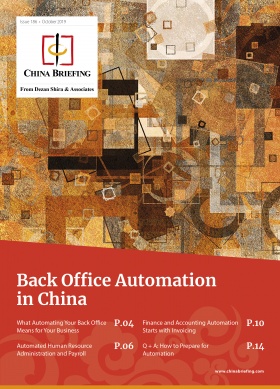China Proposes Establishing Moon-Based Special Economic Zone
Real intent may be to usher in lunar ownership claims.
Bao Weimin, a Director of the Science and Technology Commission of the China Aerospace Science and Technology Corporation (CASC) has been reported in Chinese and Russian state media as suggesting that China would benefit from establishing an “Earth-Moon Special Economic Zone”.
Bao said that Beijing is considering creating the first Earth-Moon economic zone by 2050. According to him, China is planning to invest in studies on how much it would cost for the idea to come to fruition, as well as for the deployment of a transportation system linking Earth and its natural satellite.
The CASC is the main contractor for China’s national space program, while the project could bring in around US$10 trillion for China, the state-linked Science and Technology Daily newspaper reported.
With an earth-moon economic zone, China aims to ensure that it has the ability and the first presence right to establish the rules of behavior for who has access and who can benefit. This also has long term implications for US-China, China-Russia, and China-India relations as well – all have moon-based exploration projects currently underway.
Bao said that the field has huge economic potential and thus the country should study reliable, low-cost aerospace transport systems between the Earth and Moon.
The basic technology is set to be finished by 2030, while the key transport technology is expected to be created by 2040. By the middle of the century, China could successfully establish the space economic zone, according to Bao.
China has been rapidly developing its space sector and studying the Moon in recent years. In July, private company i-Space (also known as Beijing Interstellar Glory Space Technology) launched a carrier rocket in the first successful orbital mission by the Chinese commercial space industry. Last year, China launched its Chang’e 4 probe, successfully landing its lunar rover on the far side of the Moon on January 3 this year.
China has already started investing in Space-Based Solar Power (SBSP) – a technology that it plans to use to power a lunar base. The SBSP’s deployment will take place in stages, with the first satellite scheduled for deployment in low-Earth orbit by 2025 and the GEO-based SBSP to be deployed by 2050.
Other important steps on Beijing’s way to establishing an Earth-Moon economic zone would be a study on the feasibility of 3D printing and lunar manufacturing by 2035 as well as a manned lunar mission, which is scheduled to take place by 2036.
China is also currently planning new lunar probe launches, as well as the deployment of satellites that will ensure a communication bridge between the Earth and Moon.
Dezan Shira & Associates’ Chris Devonshire-Ellis comments: “While the proposal sounds fun, there is a very serious component to this: ‘Who owns the Moon?’ According to the United Nations Outer Space Treaty, signed by every space-faring country, no nation can claim sovereignty over Earth’s lunar satellite. 102 countries have entered the 1967 accord; China joined in 1983. I suspect that Bao’s intent is to lay grounds for Beijing to start to erode the existing treaty and to begin the process of permitting ownership of lunar sites in future.”
(The film deals with the exploitation of lunar resources and mining.)
About Us
China Briefing is produced by Dezan Shira & Associates. The firm assists foreign investors throughout Asia from offices across the world, including in Dalian, Beijing, Shanghai, Guangzhou, Shenzhen, and Hong Kong. Readers may write to china@dezshira.com for more support on doing business in China.
- Previous Article Chengdu Airlines Introduces Harbin to Vladivostok Route
- Next Article Singapore’s Tax Breaks, Incentives in Vietnam’s IT Sector – China Outbound







